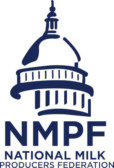The National Milk Producers Federation (NMPF) and the International Dairy Foods Association (IDFA) offered their strong support for a bipartisan bill to codify into law current milk varieties that schools may offer and reaffirm the longstanding requirement that milk served in schools be fully consistent with the most recent version of the Dietary Guidelines for Americans.
The School Milk Nutrition Act of 2019, introduced by Reps. Joe Courtney (D-Conn.) and Glenn ‘GT’ Thompson (R-Pa.), preserves current policy that allows schools to offer students low-fat and fat-free milk, including low-fat (1%) flavored milk, the organizations said. The bill permits individual school districts to determine which milk varieties to offer their students, provided that they align with the current Dietary Guidelines for Americans.
According to the U.S. Departments of Agriculture and Health and Human Services, American children and adolescents over 4 years old are not consuming enough dairy to meet the Dietary Guidelines for Americans’ recommendations. As the American Academy of Pediatrics states, “Dairy products play an important role in the diet of children. … In fact, milk is the leading food source of three of the four nutrients of public health concern (calcium, vitamin D and potassium) in the diet of American children 2-18 years.” Milk also provides numerous additional health benefits, including stronger and healthier bones, lower blood pressure and reduced risk of cardiovascular disease, the organizations noted.
“Milk has been an integral part of school meals since their beginning, and greater milk consumption equals better nutrition for America’s kids,” said Jim Mulhern, president and CEO of Arlington, Va.-based NMPF. “USDA’s action last year to return low-fat flavored milk to school menus has been good for schools, students and American dairy farmers. This legislation would further that progress by letting school districts know they can continue to offer low-fat flavored milk in years to come.”
The bipartisan legislation does not expand the varieties of milk that may be offered in schools but codifies current options into law to provide certainty to schools and school districts and ensure future generations of milk drinkers are introduced early on to healthy, nutritious dairy products that they will want to drink, the organizations said. A survey of more than 300 schools that offered low-fat flavored milk during the 2017-2018 school year found that 58% of schools saw an increase in milk sold and 82% of schools found it easy or very easy to include low-fat flavored milk within their overall calorie maximums.
“One of the best ways to help our growing children and teens get the nutrients they need is by providing healthy dairy options at school that they will actually drink,” said Michael Dykes, D.V.M., president and CEO of Washington, D.C.-based IDFA. “We are grateful to Reps. Thompson and Courtney for introducing this bill that will maintain the option for schools to offer low-fat 1% flavored milk to students.
“Most students prefer these options at school because many enjoy them at home,” he added. “The School Milk Nutrition Act of 2019 is a good first step toward providing expanded milk options that will help ensure students get the nine essential nutrients that milk uniquely provides, including powerful protein, calcium, vitamin D and potassium.”


